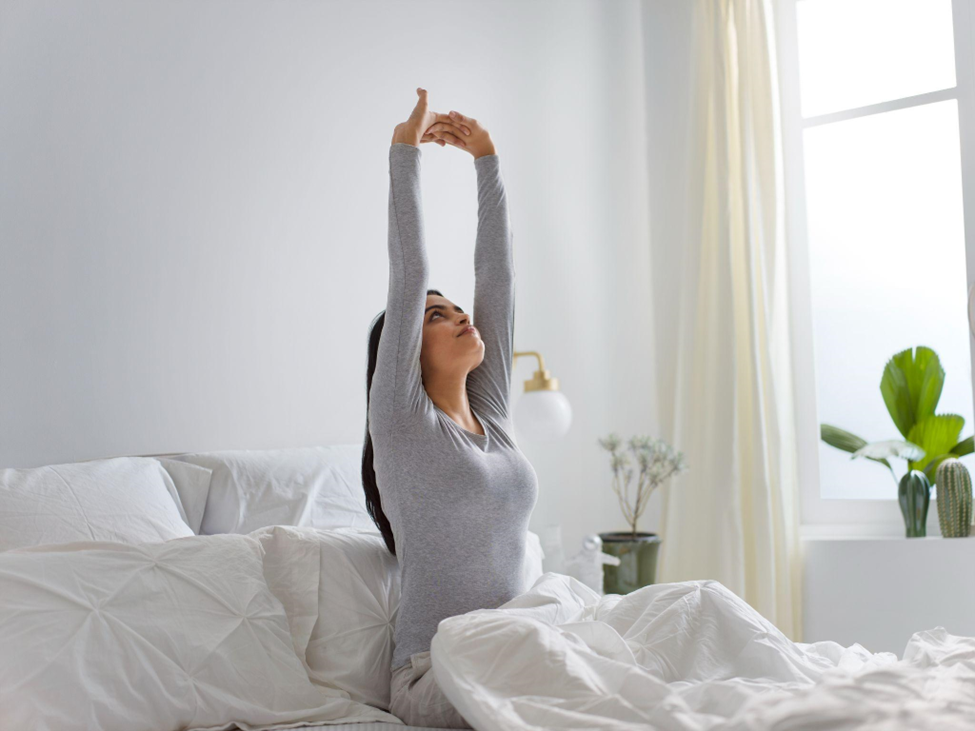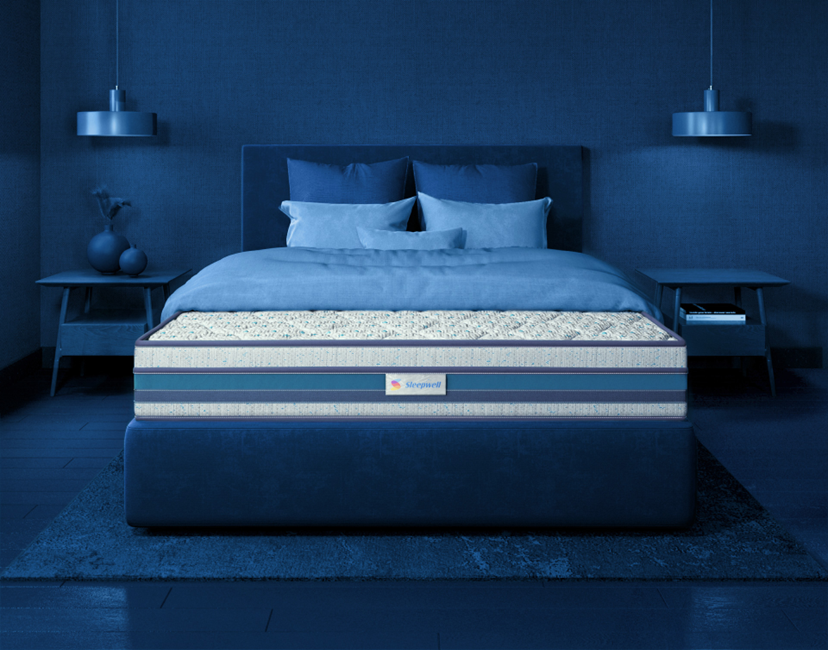| Posted on | Health-beauty
Pressure Point Perfection: How the Right Mattress Can Ease Hip and Joint Pain
0
4662 Views
Waking up with a stiff back or aching hips is no way to start the day. Unfortunately, this is far too common nowadays, thanks to a sedentary lifestyle, long hours of sitting before a computer, and lack of physical activity. Not to mention, these morning pains are often exacerbated by an unfit or unsuitable mattress.
The mattress you sleep on is more than just a surface. It’s a critical factor in how well you rest and how your body feels when you wake up. Research suggests that sleeping on a supportive mattress for hip pain can help relax the muscles and keep joints in tip-top health. This, in turn, can help you sleep better and wake up without back or hip pain.
Let's know about how not having the best mattress for Back pain can cause us pain and learn about how to ease hip and joint pain while turning your nights from restless to restful.

How an Unfit or Unsupportive Mattress Leads to Back or Hip Pain
While we often blame our age or daily activities for our back or hip pain, the mattress we sleep on every night can be a significant, yet overlooked, contributor. An unsupportive or unfit mattress can exacerbate existing conditions or even create new pain issues over time. Let’s see how:
Lack of Proper Spinal Alignment
One of the most critical functions of a mattress is to maintain proper spinal alignment during sleep. When a mattress doesn’t provide adequate support, your spine can fall out of alignment, leading to unnatural curves and pressure on the vertebrae and surrounding muscles.
If a mattress is too soft, your body may sink too deeply, particularly in the hip and shoulder regions. This can cause the spine to bend in an unnatural way, leading to strain on the lower back and hips.
On the other hand, a mattress that is too firm can push against the spine, failing to provide the necessary support to allow your hips and shoulders to sink in slightly. This lack of contouring can lead to increased pressure on the joints, particularly in the lower back and hips, resulting in pain and discomfort.
According to a study, people who slept on medium-firm mattresses experienced less back pain compared to those who slept on firm mattresses, making medium-firm mattresses the best mattresses for back problems.
Increased Pressure on Hips and Joints
Pressure points occur where your body makes the most contact with the mattress. When a mattress doesn’t properly distribute your weight, these pressure points can become sore and inflamed.
For side sleepers, this often means the hips and shoulders bear the brunt of the pressure, leading to hip pain. For back sleepers, an unsupportive mattress can cause the lower back to arch or flatten unnaturally, leading to both hip and back pain.
Misalignment Due to Poor Sleeping Position
Your mattress should complement your natural sleeping position, whether you’re a side, back, or stomach sleeper. An unfit mattress can force your body into an unnatural position, leading to misalignment of the spine and causing back and hip pain.
Side sleepers should go for a mattress that allows their shoulders and hips to sink in slightly while still supporting the spine. Without this, the hips can become misaligned with the spine, leading to pain. Often, the best orthopaedic mattress for back pain are considered good for side sleepers.
Back sleepers should get a mattress that provides firm support to maintain the natural curve of the spine. A mattress that is too soft can cause the lower back to sink, leading to pain.
Stomach sleepers should avoid overly soft mattresses as they can cause the spine to curve unnaturally, increasing strain on the back and hips.
The Role of Pressure Points
Pressure points are areas of the body that bear more weight and pressure when you lie down than other areas. These include the hips, shoulders, heels, tailbone, and between the knees for side sleepers.
When your mattress doesn’t provide adequate support, these pressure points become aggravated, leading to pain and discomfort. Over time, this can snowball into chronic back or hip pain or even worsen underlying conditions like arthritis.
A mattress that’s too firm can push against these pressure points, while one that’s too soft can fail to support them adequately. The key is finding the best bed mattress for back pain that provides the right balance of support and comfort, reducing pressure on these critical areas.
What Makes a Mattress Suitable for Pressure Points
When selecting a mattress to relieve pressure points, especially in the hips and shoulders, you need to look beyond its material construction. Certain features are far more important in ensuring pressure point relief than the material. These features ensure that the mattress supports the natural contours of your body while minimising stress on sensitive areas. Let’s look at them:
Contouring Ability
One of the most critical factors in relieving pressure points is the mattress’s ability to contour to the shape of your body. A mattress that conforms to your body’s curves distributes your weight more evenly, reducing the stress on pressure points.
One of the best mattresses known for their contouring abilities is Sleepwell’s Pro Nexa Luxury mattress, which is designed to adapt to your body's shape with up to 67% more precision than other mattresses, offering personalised support that cradles your body and enhances comfort, allowing for easy movement throughout the night.

It also boasts exceptional air circulation, dissipating heat 27% faster to ensure a cool, sweat-free sleep experience. Not to mention its superior support, delivering 32% higher pressure relief, luxurious plushness, and responsive contouring.
This mattress features Pro Nexa’s patented technology, which has been rigorously lab-tested and certified by RMIT University in Australia. As a result, it has become one of Sleepwell’s top-selling products, highly favoured by consumers.
What sets the Sleepwell Pro Nexa Luxury apart is its innovative "bread vs. dough" comparison demonstration, which highlights its technological advancements. Unlike most brands that rely on information-heavy visuals, Sleepwell Pro Nexa distinguishes itself with its cutting-edge technology and unique approach in the mattress industry.
Even Weight Distribution
The right mattress for pressure point relief should also be good at evenly distributing your body weight to prevent excessive pressure on specific areas like the hips, shoulders, and lower back. This, in turn, can add to the comfort of the sleeper and help reduce hip and joint pain.
If you want to shop for the best mattress for lower back issues, Sleepwell’s Fitrest mattress can be your best bet. Having an Acuprofile Support Layer, it’s a groundbreaking mattress featuring ingenious contouring technology with a 3-zoned Resitec profiling system. This allows it to offer exceptional support, even pressure distribution, and improved ventilation for a restful and rejuvenating sleep experience.
Adequate Firmness Level
The firmness of a mattress plays a significant role in how well it cradles your pressure points. A mattress that is too soft may fail to provide enough support, causing your body to sink too deeply and increasing pressure on your joints. Conversely, a mattress that is too firm can create pressure points by not allowing your body to sink in where needed.
Most experts recommend a medium-firm mattress for those with pressure point pain, including hip and back pain. This level of firmness offers a balance between support and comfort, keeping your spine aligned while relieving pressure on the hips and shoulders.
One of the best medium-firm mattresses is Sleepwell's Latex Plus mattress. It helps ease the pressure on your joints and spine by gently conforming to your body’s shape. It is made from natural latex, which is not only durable and flexible but also provides just the right amount of support, reducing pressure on all your stress points. You’ll feel relief from back, neck, and joint pain right away. Plus, sleeping on this mattress can even help improve your blood circulation for a healthier, more restful night.
Conclusion
So, choosing the right mattress is more than just a matter of comfort—it’s a vital step in managing hip and joint pain. By understanding the impact of an unfit mattress on your overall health and considering factors like firmness, weight distribution, and support a mattress provides, you can make an informed decision that will lead to better sleep and a healthier, pain-free life.
Remember, your journey to pressure point perfection starts with choosing the best mattress for back pain. Sleep better, feel better, and live better—one restful night at a time.
